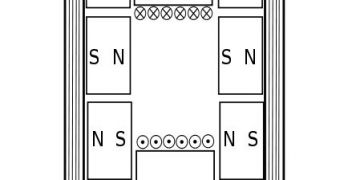At the Space 2009 Conference, held this week in Pasadena, California, engineers at the American space agency NASA have revealed the fact that they have successfully completed the construction work on their first electromagnetic propulsion system. Rather than relying on a rocket, the new device is only made up of a linear motor and a ramjet engine. The team behind the project also says that this would be the first system to fly beyond the sound barrier using a ramjet engine, arXiv reports.
Although ideas related to this type of propulsion systems have been around for about 63 years, it was only in the late 1990s that officials at the agency started paying more attention to them. Using the linear method means that no rockets and solid/liquid fuel mixes will be needed again. Chemical reactions will no longer be the method of choice for delivering vehicles to orbit. Additionally, vast amounts of fuel will stop occupying most cargo space on even the largest rockets, which means that more advanced space technologies could be researched in the near future.
Essentially, in the new system, a spacecraft is tethered to a track or rail, and is then accelerated by an electric motor to supersonic speed. “Linear motors are basically electric motors unwound. There are two groups of coils and an aluminum plate goes inside the gap [between the coils], when you hit the juice you are energizing the coils and the inductive reaction of that throws the aluminum plate out of this motor,” Dryden Flight Research Center aeronautics and propulsion engineer Kurt Kloesel, also the lead researcher on the new project, explains the new propulsion system's properties.
“You are essentially propelling this vehicle along a track up to the point is [sic] disengages from the track and takes off,” GSFC flight systems integration expert Michael Wrigh, who is also the test manager of exploration systems, adds. “As you go faster and faster, getting towards the speed of sound, the drag goes up significantly, creating this shock wave structure on the vehicle. And once you pass the supersonic barrier the drag goes down again,” Kloesel says. Essentially, he shares, what the team is proposing is using an electromagnetic field to help the craft get past the supersonic barrier.
In laboratory settings, the engineers say, they managed to do this with bench-top models. They reveal that the new technology could, in a more distant future, be used in airplanes and automobiles as well, although they admit that this is still some time away.

 14 DAY TRIAL //
14 DAY TRIAL //